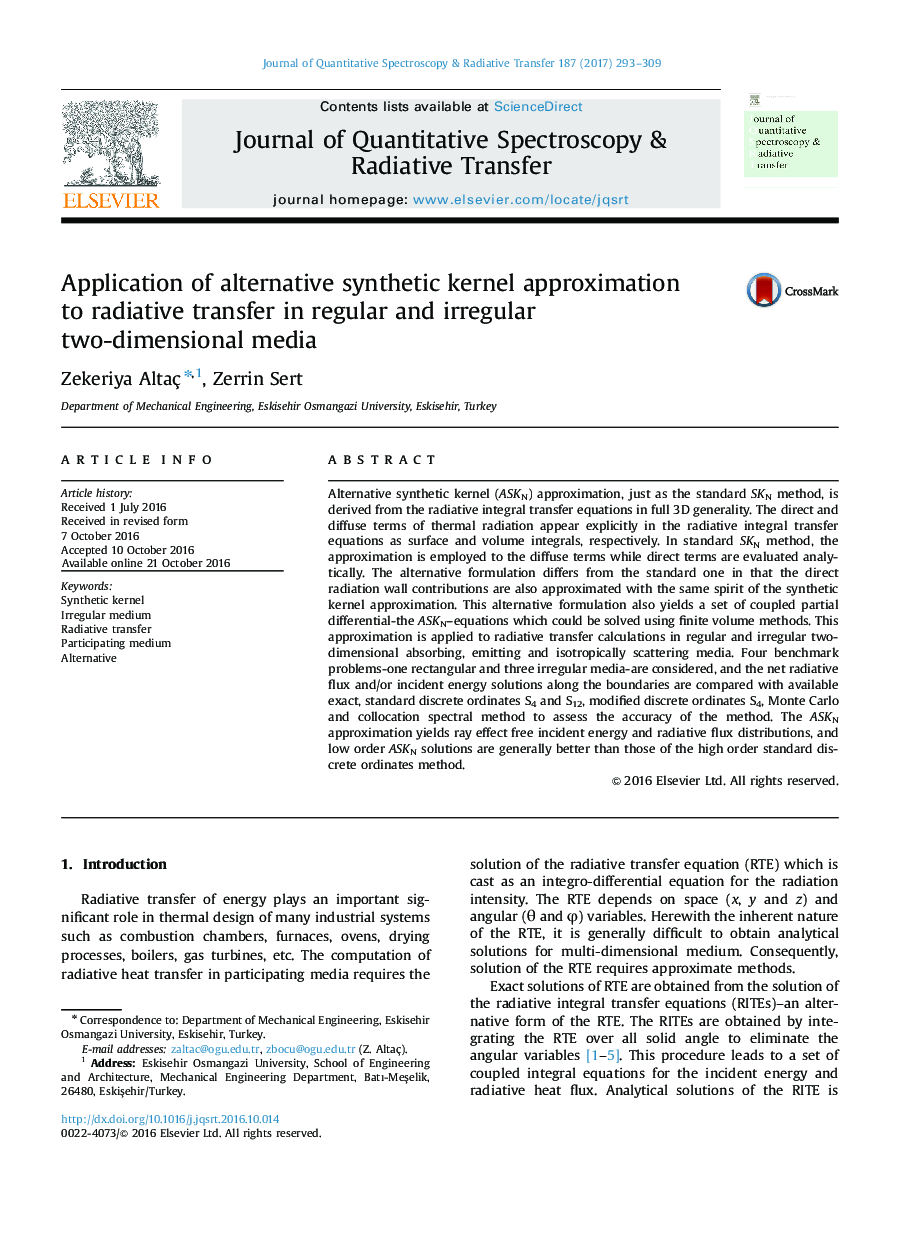| کد مقاله | کد نشریه | سال انتشار | مقاله انگلیسی | نسخه تمام متن |
|---|---|---|---|---|
| 5427420 | 1508628 | 2017 | 17 صفحه PDF | دانلود رایگان |
- Alternative Synthetic Kernel approximation is proposed.
- The method is tested for regular and irregular participating media.
- The method is compared with exact, DOM, Monte Carlo and collocation methods.
- The results are comparable to DOM.
Alternative synthetic kernel (ASKN) approximation, just as the standard SKN method, is derived from the radiative integral transfer equations in full 3D generality. The direct and diffuse terms of thermal radiation appear explicitly in the radiative integral transfer equations as surface and volume integrals, respectively. In standard SKN method, the approximation is employed to the diffuse terms while direct terms are evaluated analytically. The alternative formulation differs from the standard one in that the direct radiation wall contributions are also approximated with the same spirit of the synthetic kernel approximation. This alternative formulation also yields a set of coupled partial differential-the ASKN-equations which could be solved using finite volume methods. This approximation is applied to radiative transfer calculations in regular and irregular two-dimensional absorbing, emitting and isotropically scattering media. Four benchmark problems-one rectangular and three irregular media-are considered, and the net radiative flux and/or incident energy solutions along the boundaries are compared with available exact, standard discrete ordinates S4 and S12, modified discrete ordinates S4, Monte Carlo and collocation spectral method to assess the accuracy of the method. The ASKN approximation yields ray effect free incident energy and radiative flux distributions, and low order ASKN solutions are generally better than those of the high order standard discrete ordinates method.
Journal: Journal of Quantitative Spectroscopy and Radiative Transfer - Volume 187, January 2017, Pages 293-309
